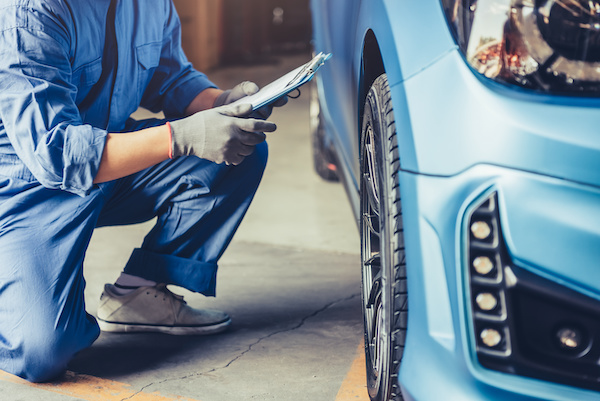Posted on 2/28/2023

https://www.youtube.com/shorts/gqABdESPnFQ Why does my car make a rattling noise when started? Rattling on cold start up is usually an indication of a timing chain issue. Timing chains synchronize the crankshaft and camshafts so they rotate at the proper time for the engine to run properly. The example vehicle we have today has 2 camshafts per cylinder head one for the intake stroke and one for the exhaust stroke totaling in four camshafts. The camshafts are connected to the crankshaft with a timing chain. There are multiple other components that are also used like timing chain tensioners and timing chain guides to help keep the chain tracking normally and remaining tight at all times. The crankshaft and camshafts sprockets are designed much like the sprockets on a chain driven bicycle with little points that fall into the chain one at a time and spin around. As the crank shaft rotates the timing chain is pulled wit ... read more
Posted on 2/27/2023

Vehicle preventive maintenance refers to the regular and proactive maintenance of a vehicle to ensure that it is running at its peak performance and remains in good condition. This involves inspections, cleaning, lubrication, and replacement of parts to keep the vehicle operating smoothly and safely. The goal of preventive maintenance is to prevent costly repairs and breakdowns, maximize fuel efficiency, and extend the lifespan of the car. What Does Preventive Maintenance Mean? Regular vehicle preventive maintenance includes a variety of tasks, such as changing the oil and oil filter, checking and topping off fluids, replacing air and fuel filters, checking and replacing spark plugs, inspecting the brakes and tires, and checking the battery and electrical system. It also involves periodic inspections of the suspension and steering components, belts and hoses, and other critical parts of the vehicle. How Does It Help? Preventive maintenance can help identify potential problems befor ... read more
Posted on 2/23/2023

Why does my car burn oil? Burning oil is also referred to as oil consumption and surprisingly all vehicles consume oil to some extent. It is actually normal to burn about 1 quart of oil between oil changes and most manufactures will tell you this. As a vehicle gets driven there is very slight wear and tear that happens to an engine which is also normal, however this wear and tear will eventually lead to excessive oil consumption. So what causes cars to burn oil? The most common causes for oil consumption are worn out valve seats, or worn out piston rings. When these parts wear down enough they allow oil to enter the combustion chamber and gets burned off with the air and fuel mixture. What are signs of burning oil? The best way to determine if your car is consuming too much oil is by regularly checking the oil. This method is best used by checking your oil level every time you fill your car with gas. One quart of oil between oil changes is normal, if your engine oil level ... read more
Posted on 2/15/2023

My car has a clattering or ticking noise? There are multiple things that can cause a rattle or ticking noise to happen on your vehicle. Today we’re going to talk about a rattling noise that has become very common on Dodge 5.7L Hemi engines. This truck came into the shop and had a complaint of an intermittent rattle or ticking noise. The noise wasn’t super loud and wasn’t rattling consistently however every two minutes it would have a slight clattering sound when idling. A stethoscope was used to pinpoint the location of the noise and found the noise was most prominent at the valve cover. Inspection Process: Now that we have narrowed down where the noise is coming from, a more intrusive inspection is needed. We know the clattering noise is coming from underneath the valve cover and at this point the valve cover needs to be removed for a visual inspection of the camshaft, push rods, & roller bearings. Once the valve cover was rem ... read more
Posted on 2/15/2023
.jpg)
How often should I replace my Fuel Filter? Fuel filters are an extremely critical part of keeping an engine running clean and efficiently. Fuel filters are made from either pleated paper, or a non-woven fiber element. The purpose of these filters is to filter the fuel that is coming from the fuel tank before it is delivered to the combustion chamber. When fuel is purchased from the fuel station it is ready to use, however there is still some very small particles and contaminants that need to be filtered out. As the fuel runs across the paper elements of the fuel filter the small contaminants are caught and contained inside the fuel filter. Overtime the filter will lose its ability to properly filter the fuel due to the excessive number of contaminants already caught. This is why regular fuel filter replacement is so important. What happens if I don’t replace my fuel filter? Once the filter has become excessively contaminated the flow of fuel i ... read more